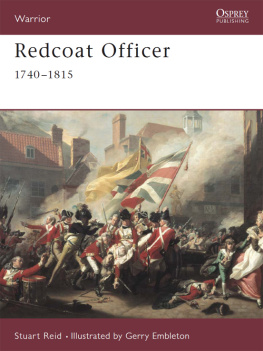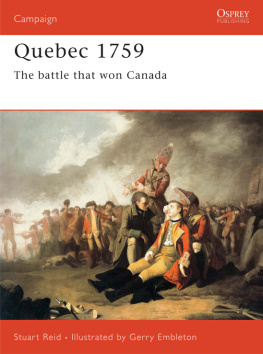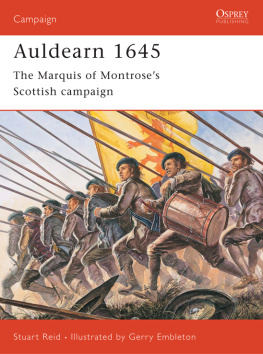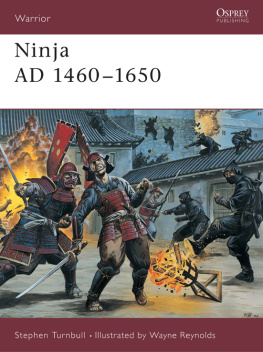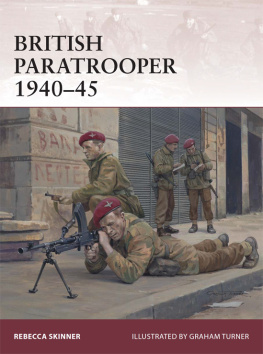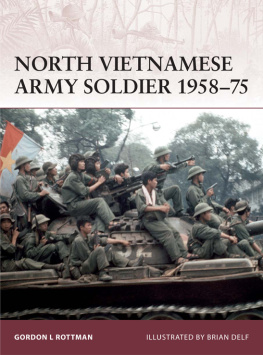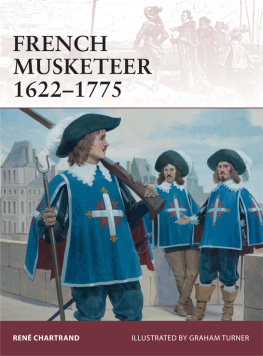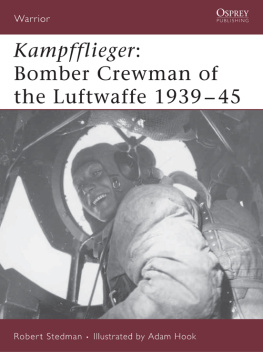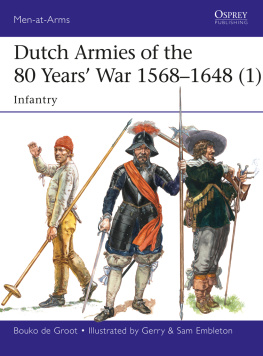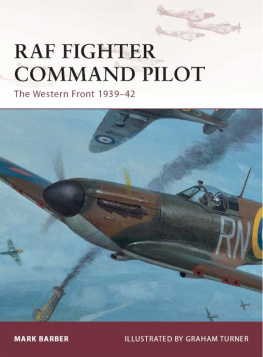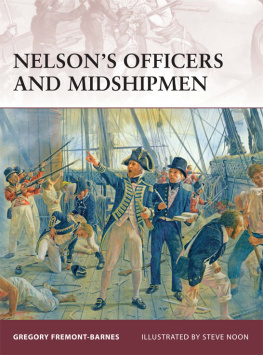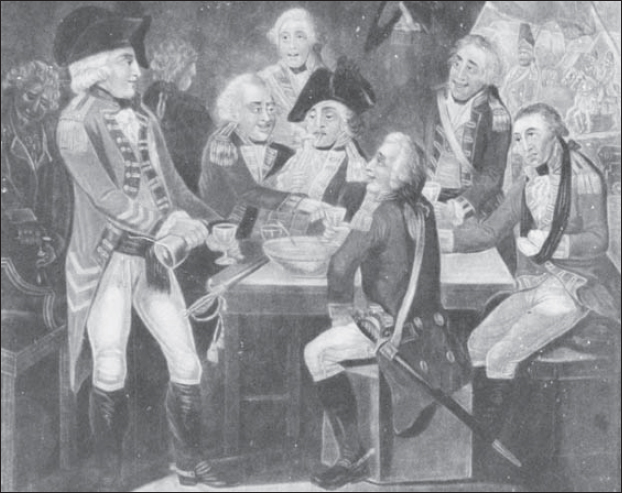Warrior 42
Redcoat Officer
1740 1815
Stuart Reid Illustrated by Gerry Embleton
CONTENTS
REDCOAT OFFICER 17401815
INTRODUCTION
I n any army the officers are to some extent set apart from the men they lead. Their role, social background and status are often very different. As Lieutenant Nathaniel Hood of the 40th Foot rather pompously wrote: Soldiers are but soldiers, and officers are soldiers and gentlemen. Under this consideration the line of distinction is preserved, the profession, through all its tracts of honour, guarded In the 18th century this distinction was by no means as clear-cut as Hood and some of his colleagues may have liked, and as this study will show, the gulf between officers and men, although very real, was by no means as wide as is popularly believed, or indeed even as wide as it became in Victorian times. Nevertheless, the way in which officers in the armies of King George I, George II and George III were recruited equipped and trained was certainly different, and while ultimately they shared many of the hardships and dangers endured by their men, their experience of war was not the same.
CHRONOLOGY
This select chronology aims to provide a temporal framework for the Georgian army, and an indication of how widely it campaigned, but is not intended to be fully comprehensive.
| 1740 | Expedition to Carthagena |
| Battle of Dettingen (Germany) |
| 174557 | Duke of Cumberland: Captain General of Army (C. in C.) |
| 1745 | Battle of Fontenoy (Flanders) |
| Battle of Prestonpans (Scotland) |
| 1746 | Battle of Culloden (Scotland) |
| 1747 | Battle of Lauffeldt (Flanders) |
| 1754 | French capture Fort Necessity |
| First regular battalion (39th) to India |
| 1755 | Braddock defeated on Monongahela |
| 1756 | French capture Fort Oswego |
| 1757 | French capture Fort William Henry |
| Battle of Plassey (India) |
| 1758 | Abercrombie defeated at Ticonderoga |
| Amherst takes Louisburg |
| 1759 | Battle of Minden (Germany) |
| Capture of Quebec |
| 1760 | Battle of Wandewash (India) |
| Battle of Warburg (Germany) |
| 1761 | Belle Isle Expedition (France) |
| 1763 | Pontiacs Rebellion |
| 1775 | Battle of Bunker Hill |
| 1776 | Capture of New York |
| 1777 | Battle of Brandywine Creek |
| Battle of Saratoga |
| 1778 | Battle of Monmouth |
| 1779 | Defence of Savannah |
| 1780 | Battle of Camden |
| 1781 | Unsuccessful French attack on Jersey |
| Cornwallis surrenders at Yorktown |
| 1783 | British Army evacuates New York |
| Siege of Cuddalore (India) |
| 1791 | Capture of Sringapatnam |
| 1793 95 | Lord Amherst (C. in C.) |
| 1793 | Expeditionary force sent to Flanders |
| Expeditionary force sent to St. Domingo (Haiti) |
| 1794 | Capture of Port au Prince (St. Domingo/Haiti) |
| Capture of Martinique |
| 1795 | Evacuation of British troops from |
| Holland/Germany |
| 17951809 | Duke of York (C. in C.) |
| 1796 | Expedition to Cape (South Africa) |
| Maroon Revolt on Jamaica |
| 1798 | Evacuation of British troops from St. Domingo |
| Rebellion in Ireland |
| 1799 | Helder Expedition (Holland) |
| Storming of Sringapatnam (India) |
| 1800 | Ferrol Expedition (Spain) |
| Liberation of Malta |
| 1801 | Expedition to Egypt |
| Defence of Elba |
| 1803 | Battle of Assaye (India) |
| Capture of St. Lucia |
| 1804 | Expedition to Surinam (South |
| America) |
| 1805 | Expedition to Hanover (Germany) |
| 1806 | Expedition to Buenos Aires |
| Battle of Maida (Italy) |
| 1807 | Expedition to Copenhagen |
| Capture of Curacao |
| 1808 | Opening campaigns of |
| Peninsular War |
| 180911 | Gen. David Dundas (C. in C.) |
| 1809 | Walcheren Expedition (Holland) |
| Battle of Talavera (Spain) |
| 1810 | Battle of Busaco (Portugal) |
| Capture of Guadaloupe |
| 181127 | Duke of York (C. in C.) |
| 1811 | Battle of Fuentes dOnoro |
| (Portugal) |
| Battle of Albuera (Spain) |
| 1812 | Battle of Salamanca (Spain) |
| Battle of Queenston Heights |
| (Canada) |
| 1813 | Battle of Vittoria (Spain) |
| Battle of Cryslers Farm (Canada) |
| 1814 | Battle of Toulouse ends |
| Peninsular War |
| Battle of Lundys Lane (Canada) |
| 1815 | Battle of New Orleans (USA) |
| Battle of Waterloo |
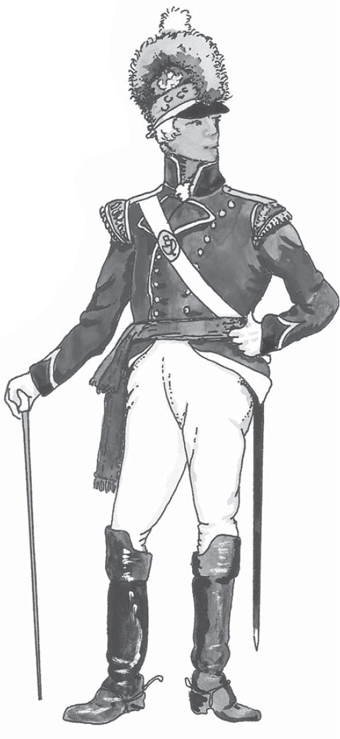
This illustration is copied from one of a remarkable series of watercolour sketches by an officer named William Loftie, who served in the 16th Foot for over 20 years between 1793 and 1815. Most of his output dates from around 1800 and records some wide variations from the regulations. This officer of the 21st Regiment (or Royal North British Fuziliers), 1801, presents a number of interesting features such as the Tarleton helmet worn in place of a fusilier cap, and the short jacket with blue facings and gold lace which might indicate a member of the light company were it not for the white hackle in his helmet. Note also the very distinctive non-regulation pointed cuffs.
THE STRUCTURE OF AN INFANTRY REGIMENT
The primary aim of this study of redcoat officers is to describe the men who served as infantry officers in the army between 1740 and 1815, how they went about joining and how they were trained and promoted. However, it will be helpful to put them in context by taking a brief look at the command structure of a typical infantry regiment.
For most of the time under discussion, an infantry regiment had just one battalion. There were exceptions; second battalions were often added in wartime but it was very rare for both battalions to actually serve together and to all intents and purposes they were normally independent of each other.
The regiment was commanded by a colonel; in the early days he gave the regiment its name and actually led it in the field. However, from the mid-18th century onwards his role was no more than an administrative one. He was in fact a colonel-proprietor, or inhaber, and actual command was exercised by his notional deputy, the lieutenant-colonel, assisted by the major.
Throughout this period infantry battalions were normally made up of ten companies, each commanded by a captain, and until 25 May 1803, three of the captains also ranked as field officers; the colonel, lieutenant colonel and major. However, on 1 September 1795 an additional lieutenant-colonel and major were added to the establishment of each battalion. These additional officers, unlike their existing counterparts, did not have to look after a company as well as carrying out their regimental duties. A subsequent War Office circular dated 27 May 1803, stated that in future each Troop and Company throughout the Army shall have an effective Captain, and therefore that the Colonels, First Lieutenant Colonels, and First Majors, in the respective Regiments, shall no longer have Troops or Companies. At the same time three captains were added to the establishment in order to take over the vacated companies abolishing the rank of captain-lieutenant in the process.

